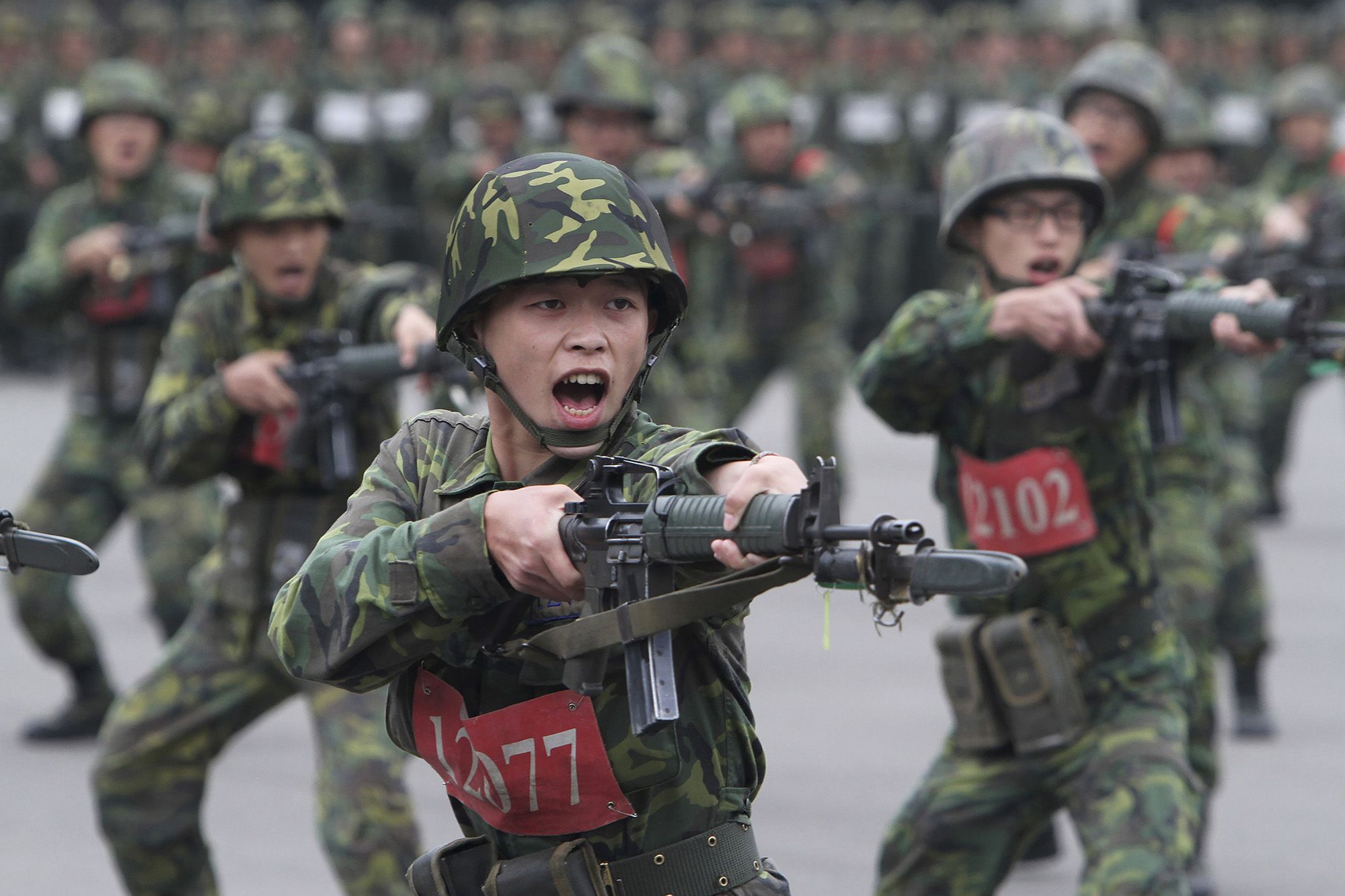Amid ongoing pressure from Beijing, Taiwan launched its annual “Han Kuang” military exercises on July 9. However, this year’s drills differ from previous iterations in two key ways:
- Expanded Scope: The 2024 exercises are the most extensive ever. Live-fire drills will span ten days instead of five and include unconventional elements such as confronting “gray zone harassment” (covert and provocative actions) and testing “whole-of-society resilience.”
- Focus on a Specific Date: This year’s simulations are based on a scenario where China launches a full-scale attack on Taiwan in 2027.
What Are the Han Kuang Exercises?
Now in their 41st year, the Han Kuang drills are Taiwan’s largest annual military exercises, focusing on how to defend against a potential Chinese invasion. Launched in 1984—during martial law under the Kuomintang and early in China’s “reform and opening-up” era—the drills began five years after the U.S. switched diplomatic recognition from Taipei to Beijing, ending its mutual defense treaty with Taiwan.
Over the years, the nature of the drills has evolved. While they used to follow pre-planned scenarios involving a “red team” versus a “blue team,” last year’s exercises were conducted without predefined scripts, allowing for attacks to occur “anytime, anywhere, and with any weapon.”
What’s New This Year?
Like last year, the 2024 field drills will be scenario-free but extended to a full 24-hour cycle from July 9–16, doubling the usual duration. Over 22,000 reservists will participate—up from 15,000 last year.
Advanced weapons systems will be tested, including:
- Mobile HIMARS launchers,
- U.S.-made TOW-2B anti-tank missiles,
- Drones,
- Locally developed Sky Sword II missiles.
According to Taiwan’s Ministry of National Defense, the exercises begin with “gray zone harassment” scenarios and then proceed through five phases:
- Transition from peace to wartime,
- Repelling large-scale assaults and amphibious landings,
- Deep defense and war of attrition if enemy forces infiltrate the island.
While exact details of the “gray zone” drills remain undisclosed, Taiwan sees such threats—including Chinese maritime militia, illegal sand dredging, and drones—as potential precursors to actual attacks.
On July 3, Taiwanese Admiral Mei Chia-shu identified six types of harassment: lawfare, cognitive warfare, attrition, coercion, deterrence, and provocation.
President William Lai recently stated that Taiwan is constantly preparing for this “war without gunpowder.”
What About Civilian Resilience?
The exercises also include civil-military integration tests, such as air raid alerts, evacuation drills, sheltering, and rescue operations. Citizens who fail to comply with evacuation orders could face fines of up to $5,000.
A defense analyst at Taiwan’s Institute for National Defense and Security Research called these efforts “a turning point in Taiwan’s defense strategy” and “a comprehensive attempt to ensure societal resilience under worst-case scenarios.”
President Lai formed a National Defense Resilience Committee in June 2024 to coordinate emergency societal responses.
Why 2027?
The most notable change this year is the assumption that China might attack in 2027, as stated by Taiwan’s Defense Minister Wellington Koo.
This ties into the “Davidson Window,” a theory named after former U.S. Indo-Pacific Commander Admiral Philip Davidson, who suggested that Xi Jinping could launch an invasion by 2027.
This year marks the Chinese military’s goal to become “modern” by the 100th anniversary of the People’s Liberation Army, and coincides with the end of Xi’s third presidential term.
Although the theory has lost traction in Washington recently, invoking 2027 could offer President Lai a political boost, especially with the next presidential election scheduled for January 2028.
Domestically, Lai—of the pro-independence Democratic Progressive Party—faces legislative gridlock over defense budget increases. The growing threat from China could turn this challenge into an opportunity to strengthen his position.
How Does China View These Drills?
Chinese scholar Cheng Yuli from the Chinese Academy of Social Sciences dismissed the 2027 threat as fabricated and aimed at boosting arms sales, not peace.
Chinese state media attacked the Han Kuang exercises, with Global Times claiming Lai’s goal is to create “a controllable military force to be used and sacrificed for Taiwan independence and separatist fantasies.”
On July 8, a day before the drills, China’s Ministry of Defense labeled them a “Democratic Progressive Party show” meant to “drag Taiwan’s people into the independence cart.”
Xinhua News Agency stated that seeking independence by force is a “dead end” and added: “No training or weapon can match the sword of the PLA or halt the historic momentum of reunification.”
Is an Attack in 2027 Really Likely?
Opinions vary. Many analysts doubt Xi actually wants war.
A military strike would be costly for China amid economic woes and tense relations with the West. Bloomberg estimated in 2024 that a Taiwan invasion could cost the global economy $10 trillion—or 10% of global GDP.
Some believe Xi prefers non-military methods, such as political pressure, intensified gray zone tactics, or even a naval blockade.
Other potential target dates include:
- 2035, when China aims for a fully modern military;
- 2049, the centennial of the PRC, by which it plans to have a “world-class” army.
Xi also faces internal challenges, especially after a sweeping anti-corruption purge that hit the missile and naval commands.
A March 2025 U.S. intelligence report cited these purges as evidence of concerns that corruption could hinder the PLA’s combat readiness by 2027.
Xi is also wary of damaging his global image as he tries to present China as a non-interventionist power, unlike the U.S.
Regional stances from Japan and the Philippines will also heavily influence any Chinese decision.
Finally, the unpredictability of Donald Trump is a wild card.
His bombing of three nuclear sites in Iran showed Taiwan that military options are on the table. The Financial Times quoted a Taiwanese source saying this “could be a useful deterrent against China.”
Still, Trump has not clearly stated whether he would intervene if China attacked Taiwan.
Former U.S. Pacific Commander Dennis Blair recently told Taiwanese media:
“2027 is just a date… and by then, Taiwan and U.S. capabilities will have already surpassed the PLA.”


